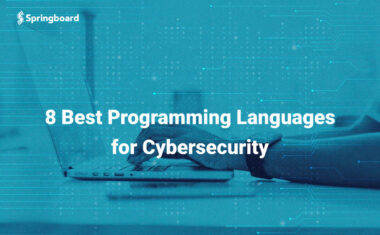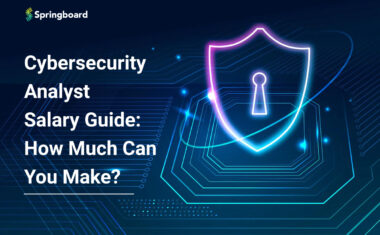47 Cyber Security Interview Questions & Answers [2023 Guide]

In this article
Cybersecurity professionals are in high demand, and the market shows no signs of slowing down. Tech research and advisory firm Gartner projects that cybersecurity spending will reach $172 billion in 2022—a nearly $20 billion increase from the $155 billion spent on IT security and risk management in 2021.
However, depending on the role and how encompassing it is, cybersecurity analyst interview questions may require showing a breadth of knowledge regarding various technologies and programming languages. And given that cybersecurity positions involve protecting sensitive business data, you must prove that you are trustworthy, reliable, and possess problem-solving skills, ingenuity, and calm when facing a difficult situation.
To help you prepare, we’ve assembled a list of sample cybersecurity interview questions that should give you an idea of what to expect on your next interview!
Entry Level Cyber Security Interview Questions
These questions are designed to test your foundational knowledge of cybersecurity concepts and techniques.
What Do You Mean by Cybersecurity?

Cybersecurity is the protection of critical systems and sensitive information from digital security threats. The field of cybersecurity encompasses infrastructure security, network security, cloud security, and application security. Cybersecurity protocols are responsible for preventing security breaches that could compromise an organization’s data and infrastructure. Cybersecurity encompasses security engineering and architecture, incident response, consulting, testing, and ethical hacking.
What Does a Cybersecurity Analyst Do?
Cybersecurity analysts strive to preserve the integrity of sensitive data by defending infrastructure and systems from cyberattacks. To protect these assets, cybersecurity analysts evaluate system vulnerabilities through diagnostic testing and traffic monitoring. Based on the results of these assessments, cybersecurity analysts design and implement risk management strategies. Cybersecurity analysts also respond to cyber attacks, conduct forensic analysis of previous cyber incidents, and work to ensure organizational compliance with relevant security standards and protocols.
What Are the Most Required Cybersecurity Skills?

Cybersecurity professionals must have a strong command of the technical skills necessary to build secure networks, diagnose and resolve security issues, and implement risk management solutions. These skills include reverse engineering, application design, firewall administration, encryption, and ethical hacking.
What Is the Difference Between a Threat, a Vulnerability, and a Risk?
Answering this question calls for a deep understanding of cybersecurity and anyone working in the field should be able to give a strong response. You should expect a follow-up question asking which of the three to focus more on. A simple way to put it: a threat is from someone targeting a vulnerability (or weakness) in the organization that was not mitigated or taken care of since it was not properly identified as a risk.
What Is Cryptography?
Cryptography is a secure communication technique that prevents parties outside of the sender and intended recipient from accessing the contents of a confidential transmission. The process of cryptography uses an algorithm to convert plaintext input into an encrypted ciphertext output. The message can be converted back into readable plaintext by authorized recipients who possess the necessary key.
What Is a Firewall? How Do You Set It Up?
A firewall is a hardware or software network security device that monitors inbound and outbound network traffic. Firewalls, which block the flow of traffic flagged as suspicious or malicious, are considered the first line of defense in the field of network security.
To configure a firewall, you’ll need to:
- Secure the firewall. Only authorized administrators should have access.
- Designate firewall zones. Evaluate assets of values and group them together according to function and sensitivity. Create a corresponding IP address schema.
- Build access control lists. These rules dictate which traffic is permitted to flow in and out of different zones.
- Configure related firewall services and logging. Set up your firewall to report to your logging server and disable any services you don’t plan to use.
- Test. Use vulnerability assessments to check that the firewall is behaving according to the parameters of your access control lists.
Firewalls analyze network traffic according to pre-configured security rules and only accept inbound connections that follow these rules. Incoming data packets that do not adhere to these rules will be blocked by the firewall, which operates like a guard at the computer’s port—the function is analogous to a bouncer checking IDs at a nightclub entrance. If your firewall is functioning properly, only trusted IP addresses are granted access.
What Is Shoulder Surfing?
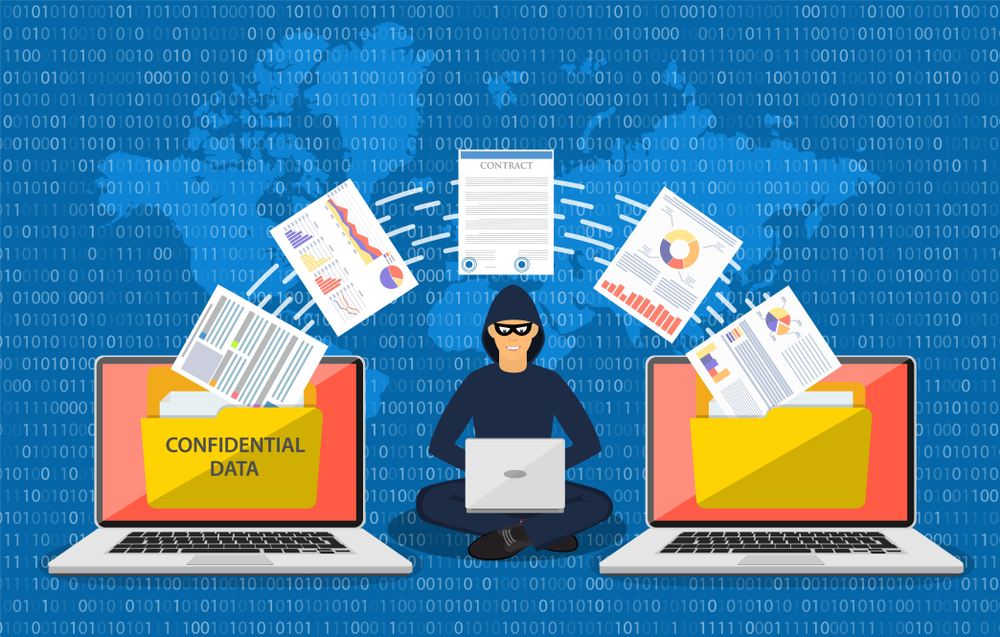
Should surfing is a method of data theft by which a bad actor peers over the shoulder of a target in order to steal confidential information like passwords and PIN numbers that can later be used to initiate a cyberattack. Like phishing, shoulder surfing is a social engineering technique—meaning it belongs to a class of information security attacks that rely on psychological manipulation to extract confidential information or influence victims to perform actions counter to their best interests.
What Do You Mean by XSS?
Cross-site scripting (XSS) is a type of cyberattack that injects malicious scripts into legitimate websites. XSS attacks use web applications to send these fragments of code—typically as browser-side scripts—to oblivious end users whose browsers execute the malicious script because it appears to originate from a trusted source.
Is Encryption Different From Hashing?

Encryption is a two-way function in which plaintext is converted into illegible ciphertext and then restored to its original plaintext form using a key. Hashing, on the other hand, is a keyless one-way function that converts information into a hash key. This hash key cannot be reversed, meaning that the original information is irretrievable.
What Do You Mean by a VPN?
A virtual private network (VPN) establishes a protected network connection when using a public network. A VPN can encrypt internet traffic in real-time, thereby securing data that travels across the network and preventing third parties from tracking user activity. VPNs redirect a user’s IP address through a remote host server, allowing for IP address concealment.
What is the difference between VA (vulnerability assessment) and PT (penetration testing)?
Vulnerability assessments identify and report security weaknesses in system architectures. Penetration testing strives to exploit those vulnerabilities and determine the extent to which a cybercriminal could compromise an organization’s assets.
Define Botnet. Is It Crucial in Cybersecurity?
A botnet is a sophisticated, centrally coordinated malware-infected network controlled by a remote attacker. Each controlled device within this network is considered a bot. Large-scale botnets can consist of millions of bots, enabling cybercriminals to launch massive attacks. Botnets are capable of executing distributed denial-of-service attacks (DDoS attacks), brute force attacks, and more. The term “botnet” is shorthand for “robot network.” Because botnets can cause extensive damage, combating these types of attacks is crucial in the field of cybersecurity.
Explain a Three-Way Handshake.
TCP/IP networks create client-server connections using three-way handshakes, which allow both ends of the connection to reliably transmit data between devices. When a client wants to connect with a server, an SYN (synchronize sequence number) is sent to inform the server of the client’s impending request. The server responds with SYN+ACK (acknowledgment), to which the client responds with ACK, thereby establishing a connection through which data will transfer.
What Are the Response Codes That Can Be Received From a Web Application?
When a client sends a request to a web server, a status code is returned to indicate the response that will occur. HTTP response status codes include:
- Informational responses (100–199)
- Successful responses (200–299)
- Redirection messages (300–399)
- Client error responses (400–499)
- Server error responses (500–599)
Response codes relevant to web application security testing include: 301 (moved permanently), 302 (found—temporary redirect), 400 (bad request), 401 (unauthorized), 403 (forbidden), 404 (not found), 405 (method not allowed), and 500 (internal server error).
Define Traceroute.

Traceroute maps the route that data travels across devices and networks from source to destination. Traceroute uses Internet Control Message Protocol (ICMP) packets to track and record this route and calculates how long the packet takes to hop from router to router. It can also identify points of failure where data was unable to be transferred.
What Is Referred to as a Man-in-the-Middle Attack?
A man-in-the-middle attack occurs when a bad actor interferes with communications between two parties and monitors or manipulates the traffic traveling between them. Man-in-the-middle attackers are able to passively eavesdrop on the connection or actively intercept the connection in order to reroute traffic to another destination. The goal of such attacks may be to steal information or corrupt data, among other motivations.
What Is Data Leakage?
Data leakage occurs when a party within an organization shares confidential information including trade secrets, source code, and private data with unauthorized recipients. Not all data leaks are the result of deliberately malicious activity, however. These events might occur due to security gaps, user negligence, or system errors.
What Are Cyberattacks? Name the Most Common Ones.
Cyberattacks are malicious offensive attempts to obtain unauthorized access to a system or network in order to steal, corrupt, or destroy information—typically for the attacker’s benefit.
Common types of cyberattacks include malware, phishing, man-in-the-middle attacks, SQL injections, DNS tunnelling, and zero-day exploits.
Get To Know Other Cybersecurity Students
Vianey Luna
IT Security Specialist at Cooper Machinery Services
Rafael Ayala
Mergers And Acquisitions at Autodesk
Ed Burke
Cyber Security Career Track Student at Springboard
Senior Level Cyber Security Interview Questions
These technical questions are designed to evaluate your understanding of more advanced cybersecurity concepts and techniques.
How Do You Ensure That a Server Is Secure?
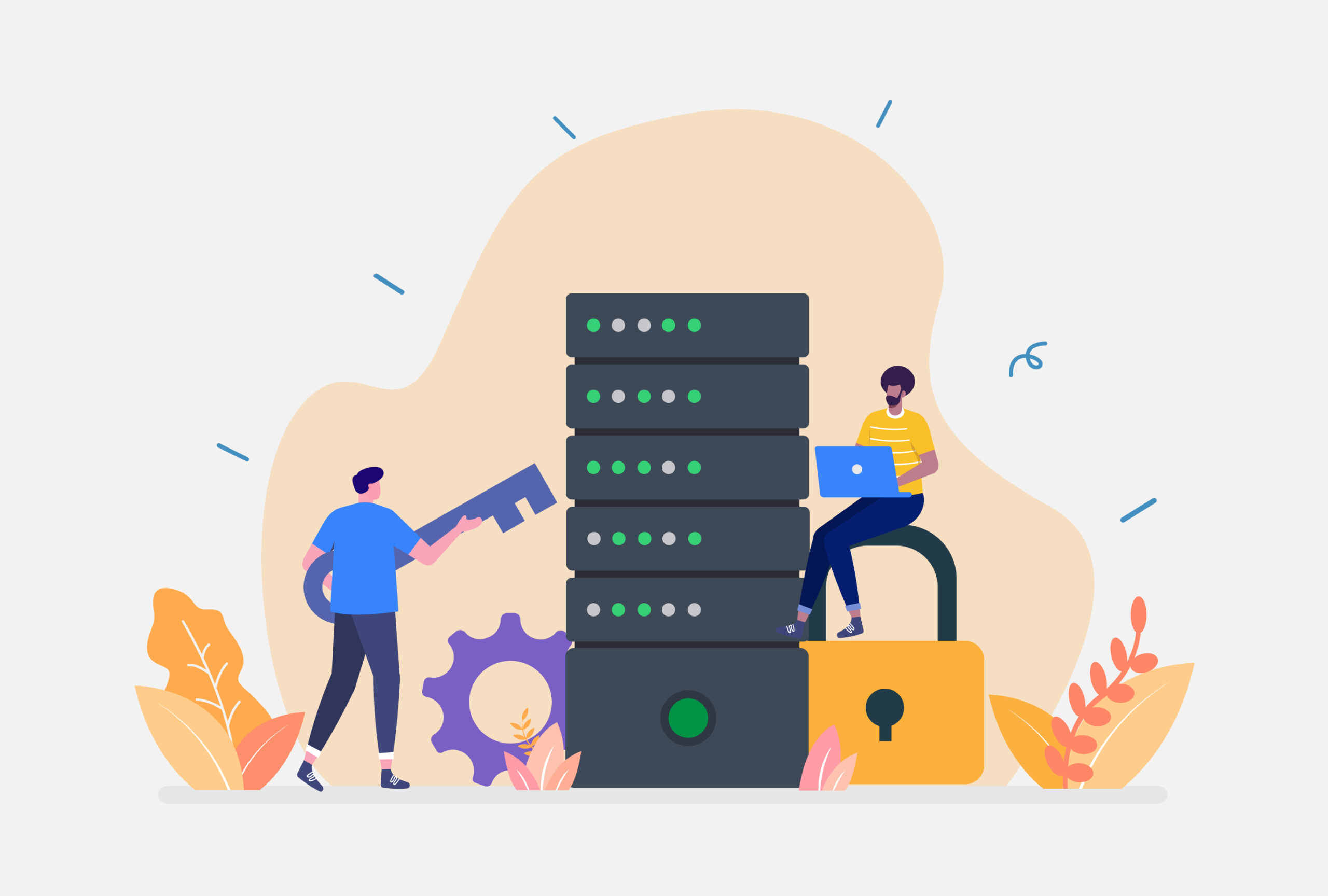
To secure a server, it is vital to first establish a protected connection using SSH (Secure Shell) Protocol, as SSH access encrypts data transmissions. SSH uses port 22 by default, which is common knowledge to hackers—so use port numbers between 1024 and 32,767 to reduce the risk of attack. You should also authenticate an SSH server using SSH keys instead of a traditional password. To secure web administration areas, deploy a Secure Socket Layer (SSL) to safeguard server-client and server-server communications via the internet. Intrusion prevention software, firewalls, password requirements, and user management tactics can help maintain server security.
How Do You Differentiate Between Symmetric and Asymmetric Encryption?
While symmetric encryption uses a single key for encryption and decryption, asymmetric encryption uses a public key for encryption and a private key for decryption. The success of symmetric encryption necessitates a secure exchange of the key, and the technique is typically used to transfer large volumes of data. Asymmetric encryption is a slower but more secure technique that is generally deployed to transfer small amounts of data. While symmetric encryption offers confidentiality, asymmetric encryption guarantees confidentiality as well as authenticity and non-repudiation.
IDS vs IPS: What Is the Difference?

Intrusion detection systems (IDS) monitor networks for suspicious activity. When a potential threat is detected, the system will alert the administrator. Intrusion Prevention Systems (IPS) are equipped to respond to threats, and are able to reject data packets, issue firewall commands, and sever connections. Both systems can operate on a signature or anomaly basis. Signature-based systems detect attack behaviors or “signatures” that match a preprogrammed list, while anomaly-based systems use AI and machine learning to detect deviations from a model of normal behavior.
What Is the CIA Triad?
The CIA triad is a conceptual model designed to represent the core components of information security and guide organizations as they craft their cybersecurity strategies. CIA stands for confidentiality, integrity, and availability. To maintain the confidentiality of an organization’s data, only authorized parties and processes should have data access privileges. To preserve the integrity of their data, organizations must prevent tampering and malicious modification. To ensure data availability, systems and networks should run smoothly so that authorized parties can access data whenever necessary. Cyberattacks target one or more legs of this triad.
Related Read: 13 Best Information Security Courses
HIDS vs NIDS: Are They the Same?
HIDS are host-based intrusion detection systems while NIDS are network-based intrusion detection systems. Because HIDS can detect malicious data packets originating from within the enterprise network, these systems are useful for catching inside threats. HIDS reviews historical data to identify unconventional cyberattacks—unusual host-based actions changes to system files will trigger an alert. NIDS, however, detect threats in real-time through live data tracking of network traffic, meaning NIDS can catch hackers before a complete system breach occurs.
What Is SSL Encryption?
SSL (Secure Sockets Layer) encryption serves to create a secure internet connection. SSL encryption protects client-client, server-server, and client-server connections, circumventing unauthorized parties from monitoring or tampering with data transmitted online. An updated protocol called TLS (Transport Layer Security) encryption has replaced SSL encryption as the standard security certificate.
Explain a Brute Force Attack Along With the Steps To Prevent It.
Brute force attacks strive to unlock password-protected assets by repetitively entering authentication credentials either manually (based on guesswork) or via automated credential stuffing (allowing for rapid testing of numerous possible combinations). To prevent brute force attacks, cyber security professionals should:
- Make unique login URLs for various user groups.
- Monitor server logs and analyzes log files.
- Use two-Factor Authentication.
- Limit logins to a particular IP address or range.
- Implement CAPTCHA as part of the login process to prevent automated attacks.
- Throttle login attempts (triggered by failed login attempts).
- Make the root user inaccessible via SSH.
What Do You Mean by Port Scanning?

Ports are vital assets that are vulnerable to security breaches. Attackers use port scanning to locate open ports that are sending or receiving data on a network. This technique is also used to assess a host’s vulnerabilities by sending packets to various ports and analyzing their responses. Nevertheless, port scanning is not an inherently malicious activity—cybersecurity specialists use port scanning to evaluate network security.
Explain the OSI Model.
Developed in the 1970s, the OSI (Open Systems Communications) model is a conceptual framework that illustrates the architecture and communication functions of a network system. The model, which consists of seven collaborative layers, characterizes these functions into rules and describes how layers operate collaboratively to transmit data.
What Is Identity Theft? Can You Prevent It?

Identity theft occurs when an attacker uses a target’s private data to impersonate or steal from them. Methods of identity theft prevention include basic cybersecurity best practices like using robust, frequently updated passwords and adding authentication steps whenever possible. Installing antivirus software can prevent intruders from accessing your personal information via malware. Some of the most common methods of identity theft include hacking, phishing, and physical mail theft.
Explain Social Network Phishing.
Phishing is a cybercrime technique in which attackers disguise fraudulent communications as legitimate or trustworthy in order to steal sensitive data or install malware on a target’s device. Social network phishing, sometimes also referred to as angler phishing, harnesses notifications or messaging features on social media to lure targets.
Black Hat Hackers vs White Hat Hackers vs Grey Hat Hackers: Are All Illegal?

Black hat hackers use cybersecurity knowledge to gain unauthorized access to networks and systems for malicious or exploitative ends. This type of hacking is illegal. Conversely, white hat hackers—also known as ethical hackers—are hired to evaluate the vulnerabilities of a client’s system. Because white hat hackers operate with the permission of their “targets,” this activity is legal. Grey hat hackers may search for system vulnerabilities without permission, but instead of exploiting the vulnerability directly may offer to fix the issue for a price. Because the intrusion was not permitted, grey hat hacking is often considered unethical and illegal.
How Frequently Do You Perform Patch Management?
Patches are necessary to prevent security breaches, and patch management is a vital part of upgrading and securing apps, software, and operating systems. The frequency with which you should perform management depends on the unique components of your security infrastructure as well as industry-specific regulatory requirements (HIPAA, for example, has particular stipulations for patch management in healthcare settings).
As a rule of thumb, you should conduct antivirus updates weekly, and database patches should be installed quarterly in confluence with the patch release cycle. Vital security patches should be implemented within days of release. Daily patch reports consisting of inventory scans can help verify that all recent updates are installed.
Can You Reset a Password-Protected BIOS Configuration?
BIOS (Basic Input or Output System) is a firmware located on a memory chip, often in a computer’s motherboard or system board. A typical BIOS security feature is a user password that must be entered to boot up a device. If you wish to reset a password-protected BIOS configuration, you’ll need to turn off your device, locate a password reset jumper on the system board, remove the jumper plug from the password jumper-pins, and turn on the device without the jumper plug to clear the password. This will reset the BIOS to default factory settings.
What Is the Difference Between Black Box Testing and White Box Testing?
Black box testing evaluates the behavior and functionality of a software product. This testing methodology operates from an end-user perspective and requires no software engineering knowledge. Black box testers do not have information about the internal structure or design of the product. Conversely, white box testing is typically performed by developers to assess the quality of a product’s code. The tester must understand the internal operations of the product.
What Do You Mean by Phishing? How Many Types of Phishing Are There?
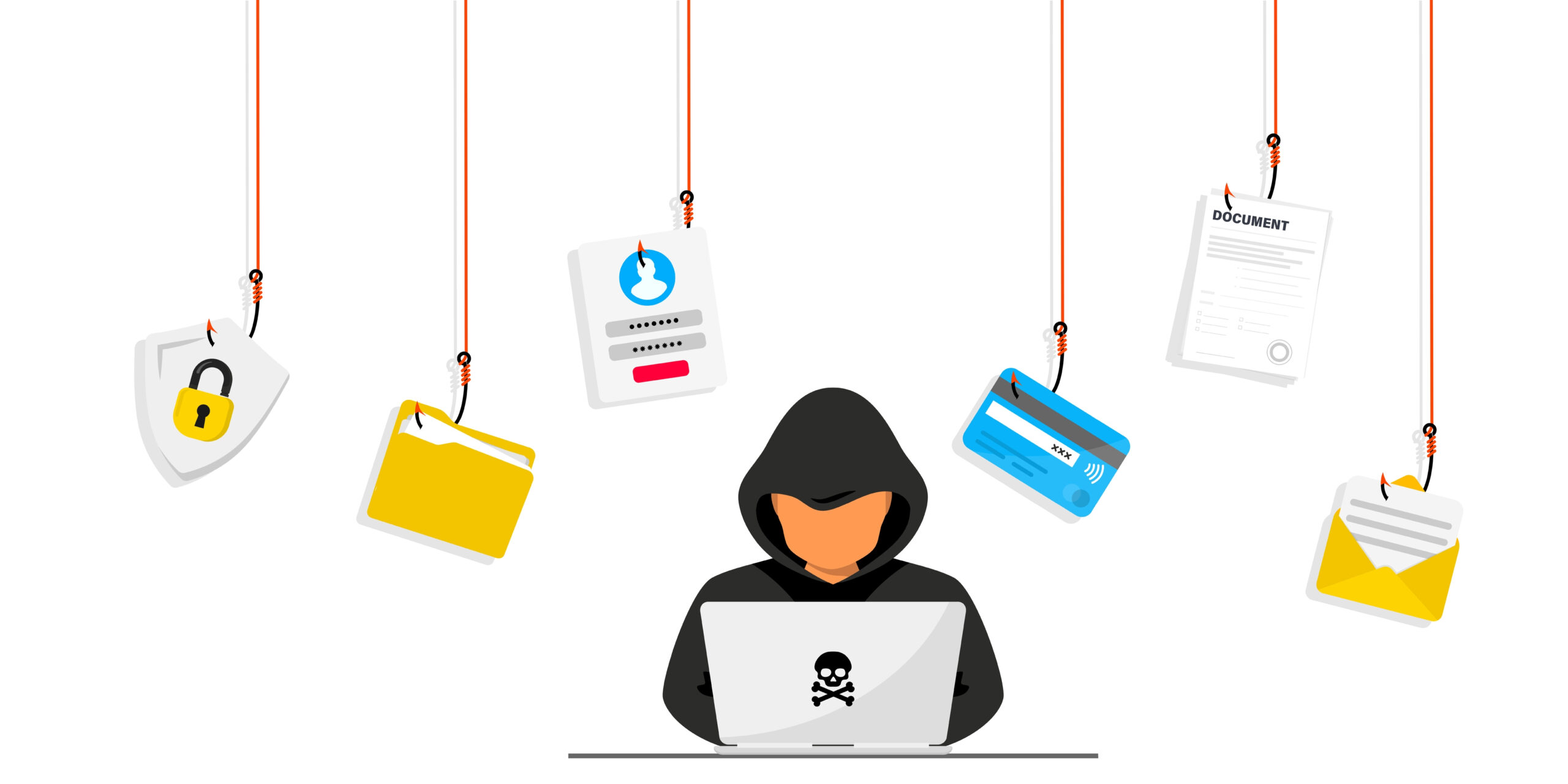
Phishing is a type of cyberattack in which communications that appear trustworthy contain content that installs malware on a target’s device or directs a target to a malicious website. While email phishing is perhaps most common, other types of phishing exist as well.
Spear phishing pursues specific targets within an organization and uses real information to convince targets that the malicious communication is an internal request from the organization, thereby increasing the chances that the target will access the malware disguised in the communication. Whaling is a type of phishing that targets C-suite executives, and smishing is a phishing attack conducted via text or SMS. From vishing to pharming, over ten different kinds of phishing exist—and the list continues to grow.
What Is Forward Secrecy?
Forward secrecy is a feature of certain key agreement protocols that generates a unique session key for each transaction. Thanks to forward secrecy, an intruder cannot access data from more than one communication between a client and a server—even if the security of one communication is compromised.
What Are Spyware Attacks?
Spyware is a kind of malware that is covertly installed on a targeted device to collect private data. Spyware can infiltrate a device when a user visits a malicious website, opens an infected file attachment, or installs a program or application containing spyware. Once installed, the spyware monitors activity and captures sensitive data, later relaying this information back to third-party entities.
What Is ARP Poisoning? Can You Explain With an Example?
ARP poisoning is a type of cyberattack that aims to interrupt, redirect, or covertly monitor network traffic. The ARP (address resolution protocol) establishes IP-level connections to new hosts by accepting requests from new devices to join the LAN (local area network) and provides an IP address. The ARP also translates the IP address to a MAC address and sends ARP packet requests to query appropriate MAC addresses to use, which saves time for network administrators.
After sending fabricated ARP packets to link an intruder’s MAC address with an IP of a device already connected to the LAN (known as ARP spoofing), a hacker can initiate ARP poisoning by changing the extant ARP table to contain falsified MAC maps. A successful ARP poisoning will link the attacker’s MAC address with the target’s LAN, rerouting incoming traffic to the attacker.
What Do You Mean by SQL Injection?
A SQL injection is a type of cyberattack that inserts malicious SQL code via input data to manipulate databases. A properly executed SQL injection can read sensitive data stored in the database, modify that data, execute administration operations, or potentially issue operating system commands. This enables attackers to manipulate data, create repudiation problems, destroy data or restrict access to it, disclose all data within the database, and make themselves administrators of the database server.
Explain Active Reconnaissance.
Active reconnaissance is a type of cyberattack used to gather intelligence about a system’s vulnerabilities. To conduct this kind of reconnaissance, attackers must interact with the target via automated scanning or manual testing with tools like traceroute. While this can be a quick and accurate way to gather information, active reconnaissance is a high-risk, high-reward approach, as direct engagement with a target is more likely to be caught by a firewall or IDS.
How Do You Differentiate Between Viruses and Worms?

While viruses attach to a file or program, worms exploit network vulnerabilities to enter a network. Viruses only replicate when activated by a host, and will remain dormant in a system until an action is taken to trigger execution. Conversely, worms propagate independently after breaching a system and can spread without human interaction or the assistance of a host.
Cyber Security Interview Questions & Answers—General
In addition to evaluating your technical skills, a potential employer will want to assess your soft skills through cybersecurity questions that are designed to reveal more about your personality and how you operate in the workplace.
Introduce Yourself
This prompt is an opportunity to give your interviewer a sense of what you will bring to the table as an employee, so ground your response in the context of cybersecurity. Summarize your cybersecurity background and experience in a way that highlights skills that are relevant to the role you’re applying for. Research company culture ahead of time, and discuss your past achievements and future goals using language that aligns with the organization’s mission and values. Offer details that will spark the interviewer’s curiosity.
Why Do You Want To Build a Career in Cybersecurity?
This is an opportunity to talk about the specific goals that are motivating your pursuit of a cybersecurity career. Focus your response on how these aspirations will drive you to contribute to the company, and emphasize how your career priorities will help your employer succeed. This is also a chance to assure your interviewer that the career you plan to build will involve sticking around at the company for an extended period of time. To successfully answer this question, illustrate how your passion for cybersecurity and plans for the future of your career will benefit your employer.
What Are Your Greatest Strengths and Accomplishments?

Take the opportunity to show how you helped your old company. Did you design its latest firewalls that prevented breaches? Did you reroute the routers? Help with information access security? Do you work well with people and show leadership skills? Talk about the types of technology you know well and how you made a positive impact in your last position. Explain how you built solid relationships with your coworkers and how you all worked together on successful projects—and how you intend to do the same at this new company.
What Is the Most Challenging Project You Encountered on Your Learning Journey?
Everyone makes mistakes, and no one is good at everything. Dig into your past: You might have overseen the response to a breach or some other serious problem. It might not have been your fault, but how you handled it shows your professionalism and problem-solving abilities. Demonstrate that you are willing and able to learn from mistakes. Explain how you took responsibility and stepped up to be a leader, and discuss how you’ll apply what you learned in your new role.
Situational Question Based on the Resume.
Situational or behavioral interview questions are designed to shed light on your communication skills, problem-solving abilities, temperament, and attitude. An interviewer may base situational questions on the content of your resume and inquire about successes, challenges, or conflicts in your previous roles.
These types of questions might ask you to discuss a time in a previous role when a data breach caught you by surprise, or an instance in which you disagreed with a teammate about a solution—or a scenario in which a powerful individual requested an exception to bend company policy in a way that would compromise security (eg. allowing use of a home computer for official tasks). Employers will want to know how you managed these situations and what the outcome was.
How Do You Envision Your First 90 Days on the Job?

Your answer should encompass how you intend to meet with your team members to find out more about them and how you can work together. You should talk about how you will prioritize gaining an understanding of what your managers need from you and what all the stakeholders hope to achieve while also building a strong rapport with your co-workers. You should ask what you can do to make an impact right away. Talk about how you intend to learn and get into the midst of business as soon as you can.
Cybersecurity Career FAQs
Wondering if a job in cybersecurity is right for you? Read on to learn more about compensation, job satisfaction, career outlook, and training for cybersecurity professionals.
Why Is Cybersecurity in Demand?
First and foremost, cyberattacks are costly—in fact, data breach costs rose to $4.24 billion per incident in 2021. As a result, many companies are investing in cybersecurity to skirt revenue loss and maintain customer trust. Digital transformation has touched every industry, and assets ranging from online financial transactions to industrial IoT-enabled machinery are now vulnerable to exploitation. As a result, cybersecurity regulations are growing, motivating organizations to protect their data and stay up-to-date with evolving legislative mandates.
Is Cybersecurity a Good Career?
The scope of cybersecurity is constantly expanding, creating expansive opportunities for professional development. To stay ahead of the continuous evolution of cyber threats, cybersecurity professionals must learn about emerging technologies, solutions, and trends. Cybersecurity is a dynamic field brimming with a variety and exciting challenges. Cybersecurity professionals also have the chance to make major real-world impacts with their work.
Finally, this career offers room for growth. Cybersecurity professionals have ample opportunities for advancement across multiple career paths. If you pursue security engineering, you may ascend to the rank of security architect and assume responsibility for the broader security architecture of your organization. If you pursue incident response positions, you’ll likely be able to pivot into the digital forensic investigation.
If you want to pursue leadership roles, you’ll find opportunities to advance into managerial and administrative roles. Cybersecurity managers oversee network systems and coordinate cybersecurity teams to ensure compliance. The top-ranking cybersecurity position within a company is that of a chief information security officer.
Is Cybersecurity a High-Paying Job?
According to Indeed, the average base salary for cybersecurity analysts is $93,745. Some cybersecurity roles are compensated with even higher salaries. Security engineers earn an average base salary of $103,622, while penetration testers take home $112,442 on average. Cloud consultants earn $125,082 per year on average. Directors of information security make $138,663 on average plus a $20,000 annual cash bonus.
How Long Does It Take To Learn Cybersecurity?
To launch a cybersecurity career, you’ll need to build the necessary technical skills through a degree program or a tech bootcamp. If you pursue a bachelor’s degree or master’s degree in computer science, information system management, or engineering, you’ll need to set aside two to four years of study—plus time to prepare for cybersecurity certification exams.
If you choose to learn cybersecurity through a high-quality bootcamp program, you can finish the course in six months working at approximately 15-20 hours per week. A strong bootcamp program will also incorporate preparation materials and offer official practice exams to help you earn a cybersecurity certification.
With the right curriculum and one-on-one guidance from an industry expert mentor, you’ll be able to build the cybersecurity skills you need to get hired.
Since you’re here…Interested in a career in cybersecurity? With or Cybersecurity Bootcamp, you’ll get a job in the industry, or we’ll return your tuition money. Test your skills with our free cybersecurity learning path, and check out our student reviews. We’re a safe bet. 🔒😉



